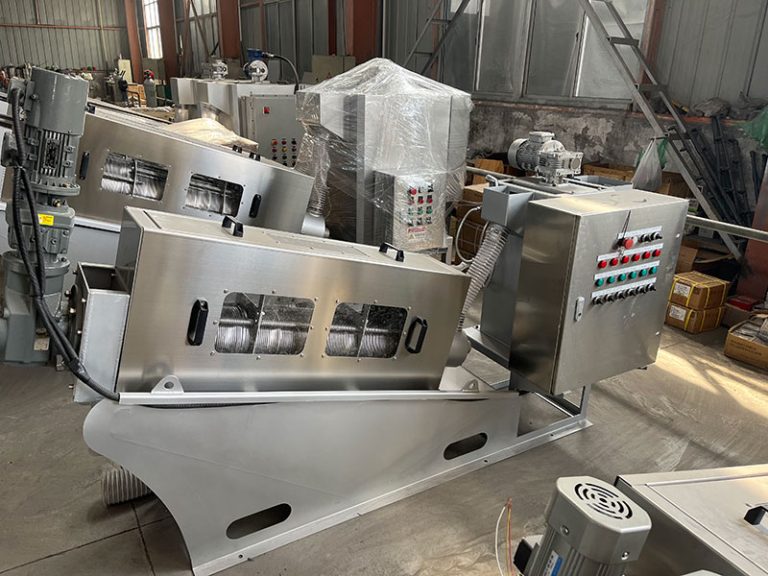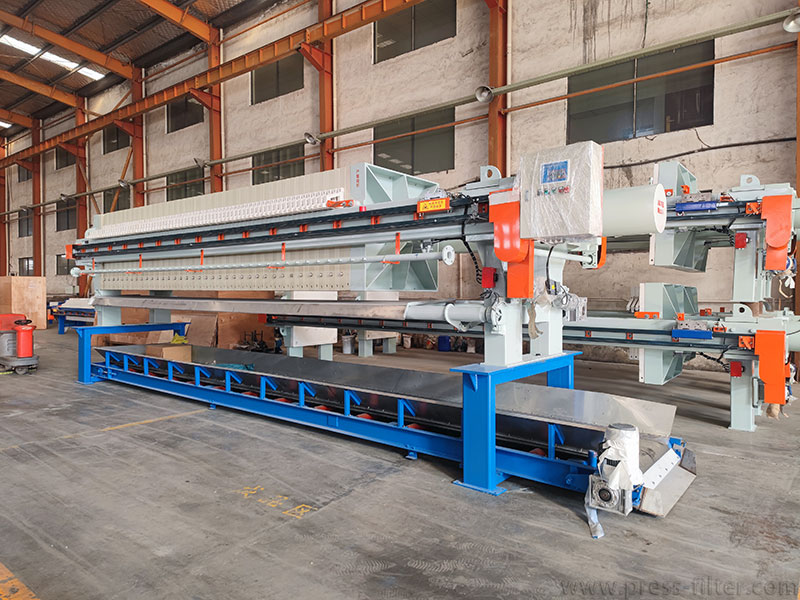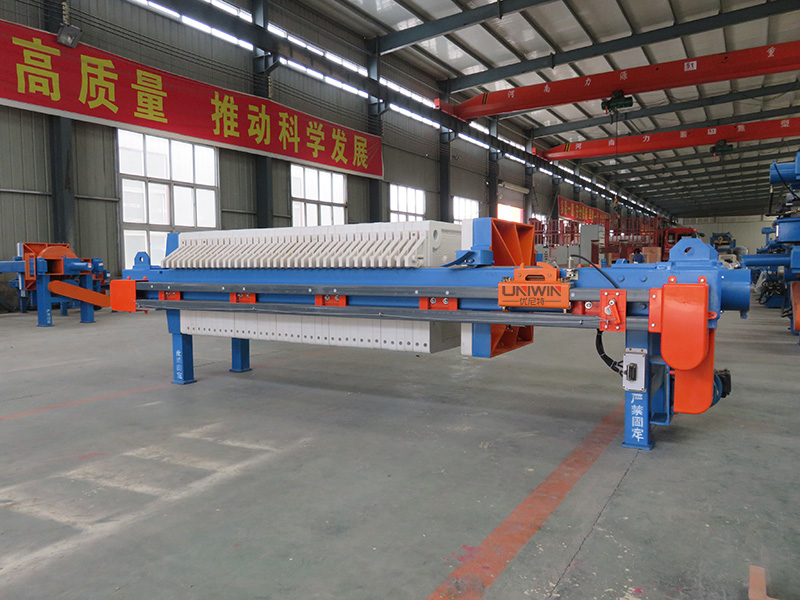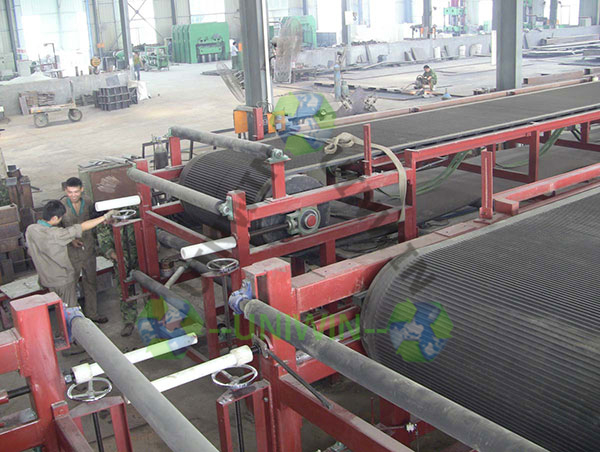What is a screw press?
A screw press is a machine that uses a rotating screw to press sludge against a permeable filter to drain water and produce a dry sludge cake.
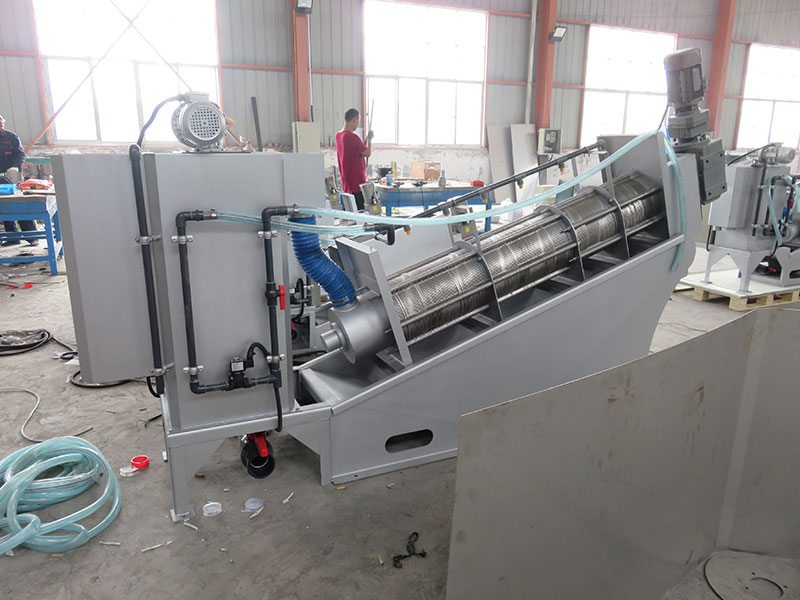
The screw press is composed of a screw stacking body, a driving device, a filtrate tank, a flocculation tank, a frame, etc. The stacked screw body is composed of a fixed ring, a movable ring, a screw shaft, a screw, a gasket, and a connecting plate. The fixed rings and the movable rings are stacked on each other, and the screw shaft runs through it to form a filter body. It can be used in biochemical pharmaceuticals, petroleum refining, power plant wastewater, municipal wastewater, brewing wastewater, coal washing wastewater, chemical wastewater, printing and dyeing paper making, and food industries.
How does the screw press work?
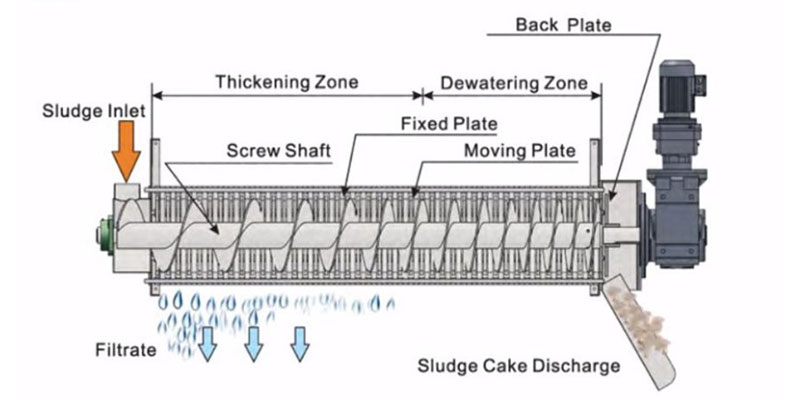
Sludge dehydration by screw press is divided into concentration and dehydration.
Concentration: Sludge flows through the pipeline into the stacked screw body from the flocculation tank. As the screw shaft in the stacked screw rotates, multiple solid and active laminations move relative to each other. Under the action of gravity, water is filtered out from the gap between the solid and active stacks to achieve the concentration of sludge.
Dehydration: The concentrated sludge moves forward continuously with the rotation of the screw shaft; along the direction of the mud cake outlet, the distance between the screw shafts gradually decreases, the gap between the rings also gradually decreases, and the volume of the screw cavity continues to shrink; Under the action of the back pressure plate at the outlet, the internal pressure gradually increases. Under the continuous operation of the screw shaft, the water in the sludge is squeezed out, and the solid content of the filter cake continues to increase, finally realizing the continuous dehydration of the sludge.
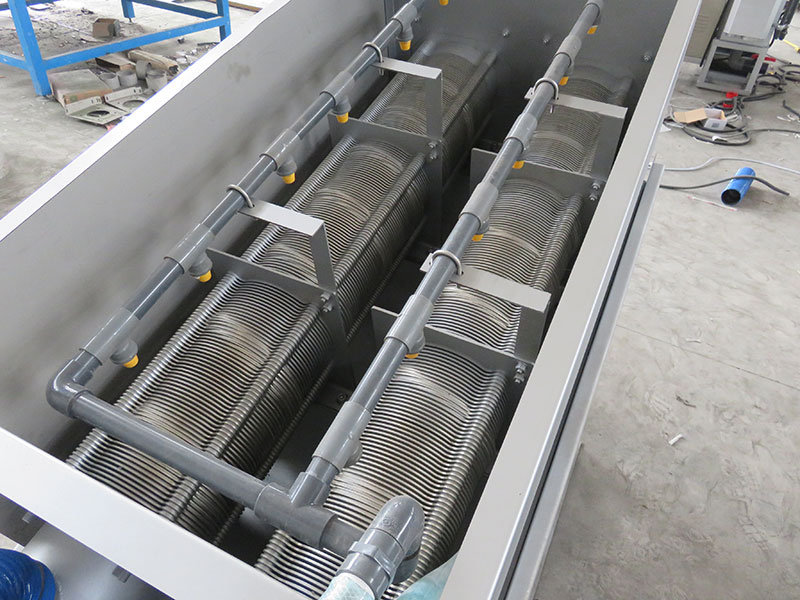
The advantages of the screw press
-
Various types of products, exquisite design, small footprint.
Compared with the traditional belt type, plate frame and centrifugal dewatering machines, the screw press adopts the three-in-one design of the dehydration body, the flocculation mixing tank, and the electric control device, which is portable to install and occupies a small space, greatly reducing the design and construction cost. At the same time,there is no need to re-construct in the replacement project, due to the exquisite design of the stacked screws.
-
Simple operation and maintenance
24-hour fully automatic unmanned operation can be realized through various methods such as PLC remote control, reducing operator’s employment and maintenance costs . At the same time, due to its exquisite design, it is easy to learn and operate.
-
Water saving, power saving, low noise
The screw press has a self-cleaning function and does not require a lot of cleaning water for clogging. Compared with other dehydrators, the flushing water consumption of the screw press is one percent of that of the belt dehydrator. The rotation speed of the screw shaft is 2-5 revolutions per minute, and the power consumption is low, which is economical and applicable. , At the same time, due to the low speed and intermittent flushing, the equipment runs without noise.
The disadvantages of the screw press
-
A small amount of processing compared with filter press
For projects with a large processing volume, the screw stacking sludge dewatering machine sometimes cannot meet the demand, and the processing capacity is limited, which cannot be compared with the large processing capacity of the belt machine.
-
Low material adaptability
It is not good at dealing with inorganic sludge, which contains sewage with high hardness and large particles, such as stones, sand and other substances that are not suitable for use.
Screw Press Parameters:
| Model | Material | D.S.Capacity (ds/h) | Sludge Capacity (10000mg/L) | Dimension (L x W x H) | Weight (kg) | Running Weight (kg) |
|---|---|---|---|---|---|---|
| HDL131 | SS 304 | ~ 6 -- 10 kg | ~1.0 | 2000x660x1040 mm | 190 | 300 |
| HDL201 | SS 304 | ~ 9 -- 20 kg | ~1.5 | 2500x800x1450 mm | 320 | 550 |
| HDL202 | SS 304 | ~ 18 -- 30 kg | ~3.0 | 2600x950x1450 mm | 470 | 680 |
| HDL203 | SS 304 | ~ 27 -- 45 kg | ~4.5 | 2700x1100x1450 mm | 620 | 920 |
| HDL301 | SS 304 | ~ 30 -- 60 kg | ~6.0 | 3200x800x1700 mm | 600 | 1100 |
| HDL302 | SS 304 | ~ 60 -- 100 kg | ~12 | 3400x1250x1700 mm | 1350 | 2050 |
| HDL303 | SS 304 | ~ 90 -- 150 kg | ~18 | 3600x1600x1700 mm | 1820 | 2580 |
| HDL304 | SS 304 | ~ 120 -- 200 kg | ~24 | 3600x2050x1700 mm | 2400 | 3520 |
| HDL401 | SS 304 | ~ 100 -- 150 kg | ~15 | 4000x1000x2200 mm | 1100 | 2500 |
| HDL402 | SS 304 | ~ 185 -- 350 kg | ~30 | 4050x1420x2200 mm | 1900 | 3600 |
| HDL403 | SS 304 | ~ 400 -- 600 kg | ~45 | 4050x1800x2200 mm | 3050 | 5250 |
| HDL404 | SS 304 | ~ 480 -- 800 kg | ~61 | 4400x2650x2350 mm | 5150 | 7200 |

